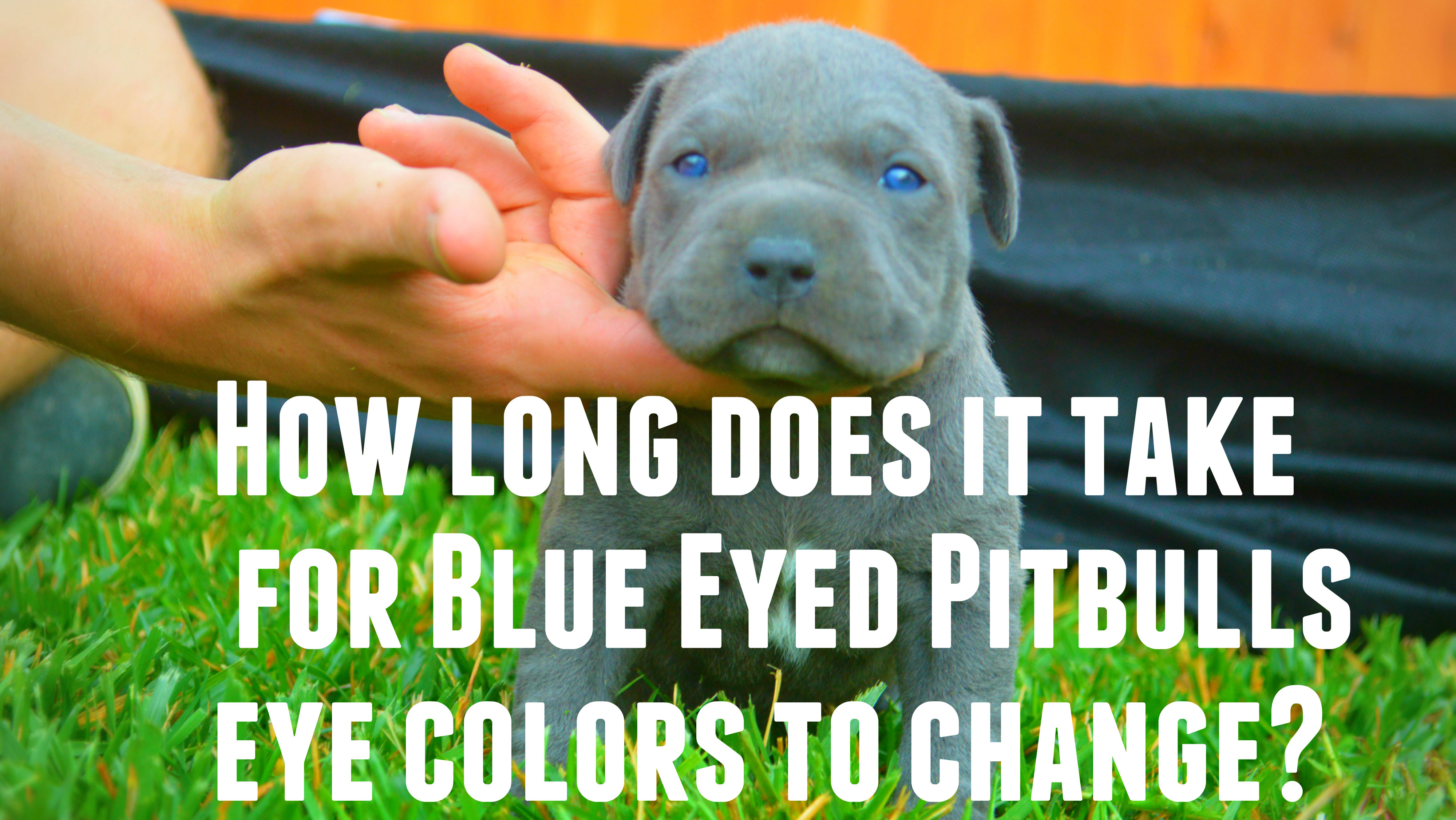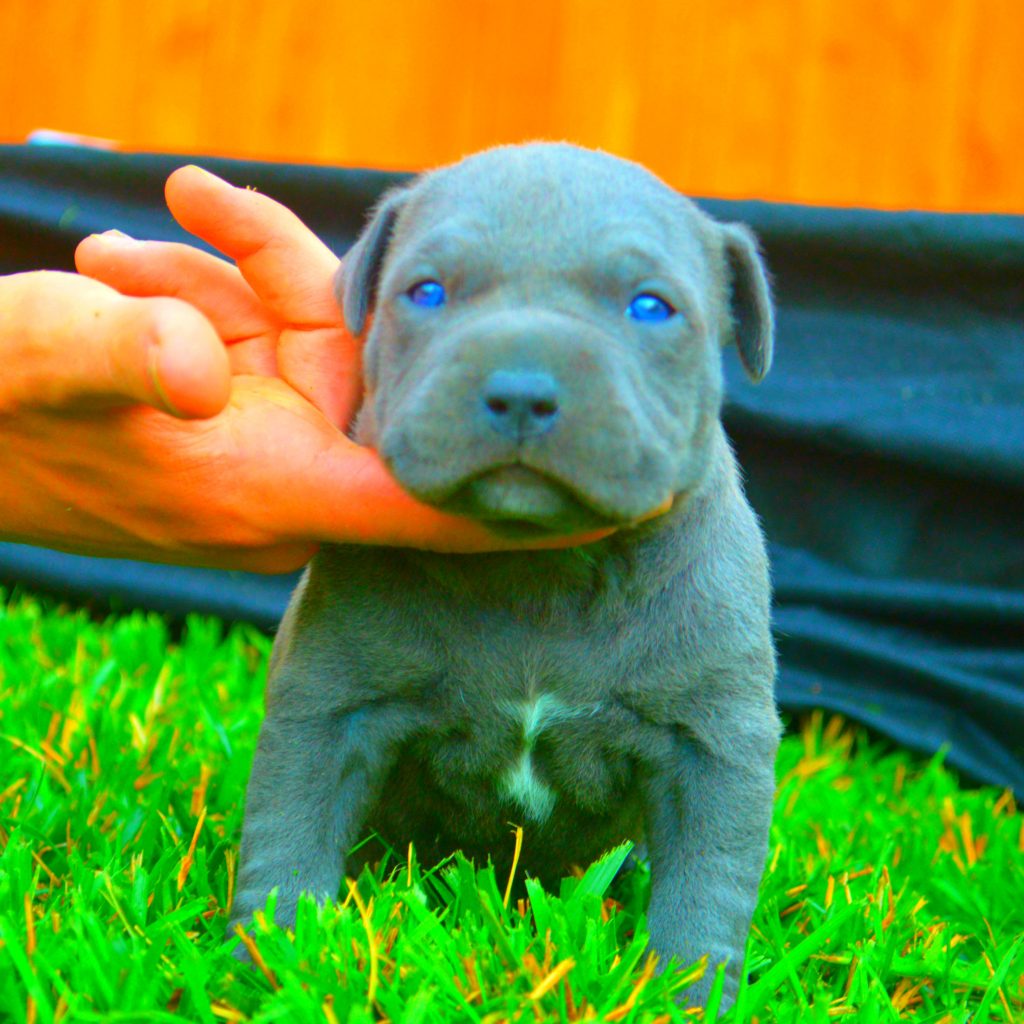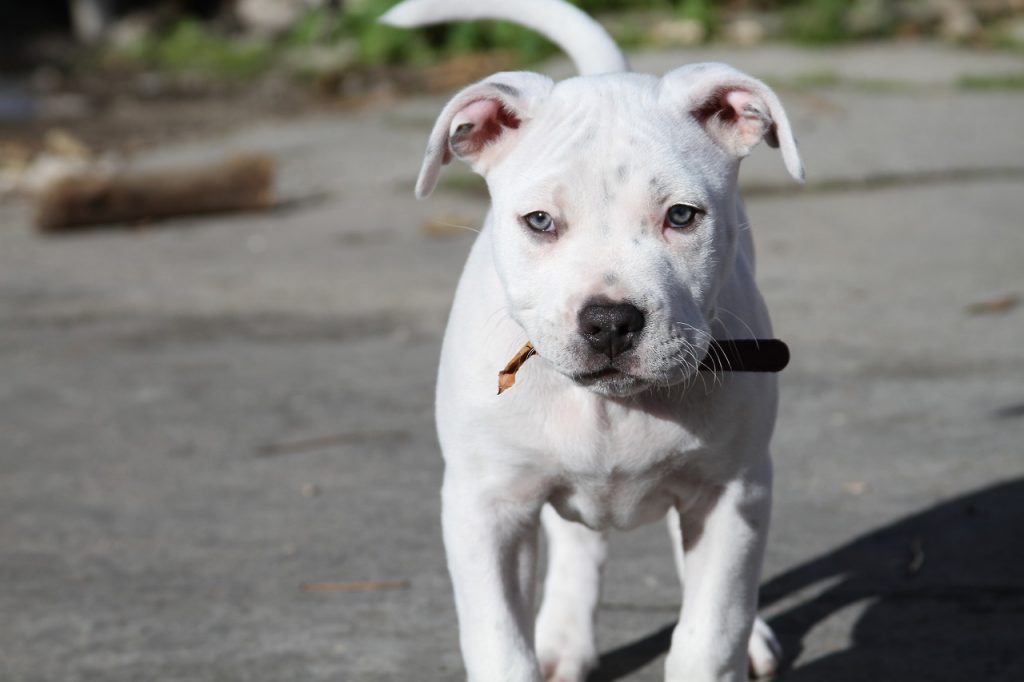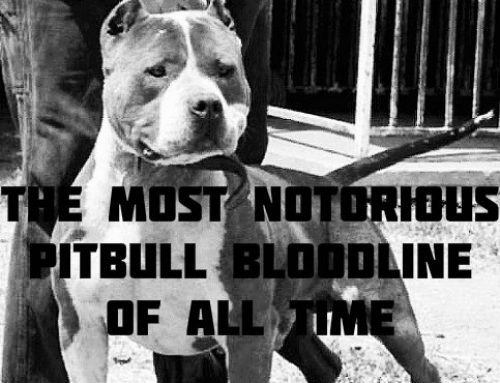No matter if you have a top notch papered pitbull or just adopted a pitbull during the puppies first few weeks of life their eyes have a blue coloration. Varying between dark and light blue which are altering everyday with the puppies age change. This color usually dosen’t last, and changes as the puppy matures. It can take a few months for the puppy to show signs of their permanent eye color. With my experience of hundreds of puppies the eyes usually change when the dog is 6 to 10 months old. The eyes slowly changes colors as the dog gets older and they reach their permanent eye color.
NewBorn
Newborn pitbull puppies don’t open their eyes after being born. It take between eight and fourteen days till their eyes slowly open to view the new world. The site of those diamond eyes as they first open to see the world is an awe inspiring experience in itself. The color is constant and has no hints into the puppies mature eye color.
Mature eye Color
Three to Four months into the puppy’s developing life their permanent eye color starts to show signs. Emerging slightly from the Diamond Blue coloration. To change from blue to another dark brown, grey, or hazel color doesn’t happen overnight. It can take up to 1 year from this point for eyes to take their permanent eye color. In special occasions the changing eye color takes less time.
Blue Eyed Pitbulls vs. Dark
As puppies mature in most scenarios puppies eye colors darken with time. Of course not in every situation. The American Pitbull has a wide variety of changing eye color. The blue eye is produced by the diluted pigment of the eye. It can be affected by coat color or can be inherited as a completely separate gene. To have an adult dog with a light color eye is uncommon. In most occurrences pitbull’s are born with blue eyes that darken to brown or hazel as they mature. With seeing hundreds of puppies over the years I have never seen a full grow pitbull with blue eyes unless the picture has been photo shopped.
Why do eyes change color?
A puppies eye color depends on the genotype or genetic make-up. While most dogs have brown eyes there is change and alteration in all breeds. Eye color in most cases is affected with coat color as examples: Amber eyes commonly occurs in liver and blue dogs while occasionally with black pigment dogs.
Breeding for color
There has always been people with puppies for sale that are trying to produce a certain color rather if that’s a coat, nose or eye color. This is one of the worst breeding methods I have seen because breeding for color is fine if you first breed for temperament and health. Breeders who care just about color tend to disregard other key factors in breeding like health, structure and temperament. Color can be a desired trait ,but shouldn’t be obtained at the sacrifice of quality. To produce colors like grey, blue, and other rare colors of coat, it’s very hard to maintain quality without properly out-crossing to different gene pools to help generate a more diverse gene pool.
Different breeds with blue eyes
Blue eyes seen in many white pitbull puppies isn’t just held to their breed or a certain color. Many different breeds such as the Siberian Husky, most recognized and the Australian Shepherd, one of the few that eye color gene is independent of the coat color. Breeds that will likely produce blue eyes because they are excessively white spotted are Collies, Dalmatians, Shetland Sheepdogs, Harlequin Great Danes, Dapple colored Dachshunds and Blue heelers. In almost all breeds blue eyes is affected by coat color and is a rare occurrence in any breed.
Summary
The American Pitbull Terrier has so many different coat and eye colors like white pitbulls with blue eyes which many other breeds don’t have these characteristics. Being one of the most popular breeds it’s genetic diversity has went in a million different ways producing crazy eye colors and physically sound dogs. Those beautiful blue diamond like eyes are a wonderful attribute that this beautiful breed shows in its highest fashion.







Leave A Comment